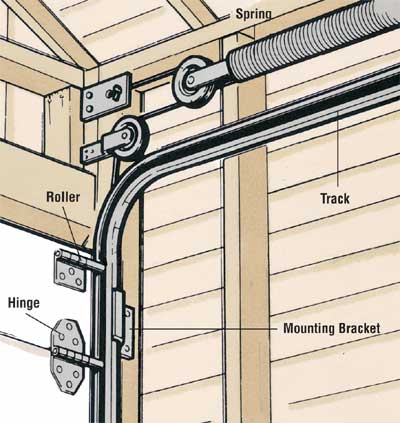Usual Garage Door Issues and How to Deal with Them
Garage doors are crucial for both protection and benefit, yet they typically provide a range of typical issues that can annoy house owners. Troubles such as too much sound throughout operation, doors that fail to open up or close, misaligned tracks, and malfunctioning remotes can develop without warning. While some problems may show up straightforward to solve, others might need a more nuanced understanding of garage door mechanics. Resolving these troubles successfully not only improves performance but also lengthens the life of the door. One might wonder what steps are essential to deal with these difficulties successfully.
Noisy Garage Door Procedure
A noisy garage door operation can be a considerable resource of annoyance for homeowners, typically showing underlying mechanical concerns. Such disturbances might stem from different reasons, consisting of worn-out rollers, loosened hardware, or not enough lubrication. Recognizing the source of the sound is essential for effective resolution.
Over time, these components can wear away, leading to grinding or squealing audios as the door moves. In addition, loosened bolts or screws in the door system can develop rattling audios during procedure.
One more contributing variable is inadequate lubrication of the door's moving parts. Using a premium lube to the tracks, springtimes, and rollers can greatly decrease friction and sound. Property owners ought to perform this maintenance regularly to keep ideal performance.
Last but not least, the garage door opener might also generate noise because of its age or mechanical problems. If the noise continues despite dealing with other aspects, getting in touch with a professional for a thorough evaluation and possible repair work might be needed.
Door Won't Open or Close
Experiencing a garage door that will not open up or close can be extremely aggravating and typically indicates a malfunction within the system. Numerous aspects can add to this concern, and identifying the origin is crucial for efficient resolution.

Following, evaluate the safety sensors located at the base of the door. These sensing units can come to be misaligned or obstructed by debris, preventing the door from running appropriately. Tidy the sensors with a soft fabric and guarantee they are aligned.
In addition, the garage door's internal components should be evaluated. Concerns such as a busted springtime, damaged rollers, or a damaged opener can restrain activity. If any type of components show up to be damaged, it might be suggested to speak with an expert for repair work.
Misaligned Tracks
To identify misalignment, visually check the tracks for voids or unequal spacing. If you see any type of disparities, it is crucial to attend to the concern without delay - garage door service. Begin by loosening up the screws that safeguard the track to the wall surface, enabling for changes. Thoroughly tap the track back right into its correct position using a rubber club or a comparable device, ensuring it is straight and degree.
Once the alignment is corrected, retighten the screws to protect the track. For a more long-term service, take into consideration strengthening the tracks with additional brackets. Normal maintenance, consisting of cleaning the tracks and making certain rollers are in excellent condition, can stop future imbalances. By dealing with misaligned tracks without delay, you can restore the capability of your garage door and enhance its durability.
Broken Springs
Amongst the numerous elements of a garage door system, busted springtimes are one of one of the most common concerns that can substantially hinder its performance. Garage door springtimes are crucial for balancing the weight of the door, enabling smooth opening and closing. When a spring breaks, it can cause a door that is hard to run or, in many cases, totally unusable.
There are 2 major sorts of springtimes: torsion springtimes, which are placed above the door, and extension springs, found on either side. Signs of a damaged spring include a door that will not open up, a visible gap in the spring, or a loud noise throughout procedure. Trying to run a garage door with a broken spring can trigger additional damages to the door or the opener.
Fixing busted springtimes is not a do it yourself task; it needs specialized devices and know-how due to the high stress entailed. It is suggested to get in touch with a specialist service technician that can securely replace the springs and make certain the door is effectively stabilized. Routine maintenance and inspections can help protect against springtime failures and extend the life-span of the garage door system.
Push-button Control Issues

If the remote still fails to operate, inspect the garage door opener to guarantee that its sensing units are clean and unblocked. Dirt, particles, or imbalance may impede the signal transmission between the remote and the opener.
Disturbance from various other digital tools can additionally impede remote Check Out Your URL functionality. Guarantee that neighboring tools, such as wireless routers or cordless phones, are not triggering interruptions. garage door service. If interference is thought, attempt moving these devices further far from the garage door opener
In some instances, the remote might need to be reprogrammed. Seek advice from the maker's standards to reset the push-button control and synchronize it with the garage door opener. If all else fails and the remote continues to malfunction, take into consideration getting in touch with a specialist specialist for a detailed examination and prospective replacement of the remote or opener.
Conclusion
Comments on “Quick Garage Door Repair for Stress-Free Service”